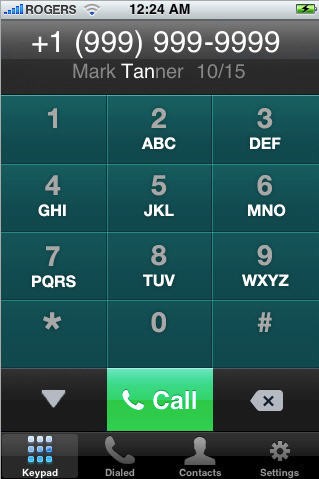The Stress of Carrying Cash
Post on: 24 Апрель, 2015 No Comment

Can too much cash possibly be a bad thing? Right now the answer is yes. In the U.S. individuals, banks, and the Federal Reserve find themselves locked in a vicious cycle of retrenchment. It plays out like this: Households worried about the economy and gyrating markets are piling into cash. That puts a strain on banks, which have few opportunities to put that money profitably to work, but still have to pay interest and maintenance fees on the funds they take in. The conundrum drove Bank of New York Mellon, the world’s largest custody bank, to announce plans in early August to begin charging clients for cash balances above $50 million “to pass on costs incurred from sudden and significant increases in U.S. dollar deposits.” All of this is frustrating the Federal Reserve, which to revive the economy has kept its target rate at near zero for 32 months while throwing hundreds of billions at quantitative easing—all to little apparent avail.
“We’re all drowning in cash,” says Rick Ashburn, chief investment officer at Creekside Partners, a Lafayette (Calif.) investment firm. He calculates that after taxes, a 10-year Treasury bond, whose yield had plummeted to 2.2 percent on Aug. 9 from 3.75 percent earlier this year, now provides a negative return 1.5 percent to 2.5 percent below expected inflation.
When Fed Chairman Ben S. Bernanke first began slashing rates in 2007, he was starting from a target rate of 5.25 percent. The rate is now at 0.25 percent, where it will remain until at least mid-2013, after the Federal Open Market Committee broke with tradition on Aug. 9 and for the first time put a date on its commitment to keep borrowing costs low. To help the economy get back on its feet, the central bank also has pumped $2.3 trillion into global financial markets through purchases of Treasuries, mortgage bonds, and agency debt. Fed balances stood at $1.62 trillion as of Aug. 3, up from $10.3 billion in August 2008.
The toll low rates are taking on savers is very real. The same cash account that was paying $500 on every $10,000 four years ago barely ekes out $100 today. That, says Morningstar analyst Michael Wong, is a negative real rate of return, considering inflation of about 2 percent. “Because investors are so risk averse lately,” he says, “many would rather earn nothing on their cash than risk losing it by putting it into equities or bonds.”
Garett Jones, an economics professor at George Mason University, says Bernanke is purposely trying to discourage people from saving and instead spend their money, and thereby stimulate the economy. “Perhaps these savers should take the grim advice of Wall Street money managers: ‘Don’t fight the Fed,’ ” he says.
There is disagreement within the central bank concerning the burden its easy money campaign has placed on savers. In testimony last month to the House Subcommittee on Domestic Monetary Policy and Technology, Kansas City Fed President Thomas Hoenig argued that near-zero interest rates unfairly subsidize large banks and debtors. “We should not be guaranteeing a return for Wall Street or any special interest group,” he said. Hoenig, a voting member of the Fed’s rate-setting committee who has repeatedly dissented from Bernanke’s easy money stance, says the current policy “redistributes wealth in this country from the saver to debtor by pushing interest rates on deposits and other types of assets below what they would otherwise be.” Thus, he said, “savers and those on fixed incomes subsidize borrowers.”
According to the most recent data available from the Fed, cash held by U.S. banks stood at a record $981 billion in the week ended July 27. That’s more than triple the amount they had in July 2008, before Lehman Brothers failed.
Banks are not putting deposits to use because they don’t see enough compelling loan-making opportunities in an uncertain economy. The Fed reported that deposits at U.S. domestically chartered commercial banks climbed 16 percent in the past 31 months to $7.38 trillion, while loans fell 6.4 percent. That has forced many banks to shovel money into short-term securities that yield next to nothing. They could, adds Wong of Morningstar, also buy lower credit quality corporate bonds, but the prospect of a worsening economy may make the additional credit risk not worth it.
Even if financial companies are paying depositors next to nothing, they must still pay fees to the Federal Deposit Insurance Corp. “When banks pay you interest on cash, they are paying you a fraction of the interest they are earning on your cash,” says Donald Luskin, chief investment officer of TrendMacro. “When they can earn nothing on your cash, there’s nothing left over for them to pay you. At that point, their holding your cash for you becomes what amounts to a safe-deposit box function. You have to pay them for that.”
Meanwhile, U.S. companies are sitting on more cash than ever, having boosted their coffers for 10 straight quarters to $963.3 billion. That’s 58 percent more than in December 2007, near the start of the credit crisis, according to Standard & Poor’s (MHP ) .
Naturally, the Fed would like to see companies spend more of that hoard on hiring and capital investment. Yet for those companies willing to part with their cash, boosting dividends and buybacks is the preferred option. More than 160 publicly traded companies currently pay dividend yields above the 10-year note, according to Bloomberg. And the overall U.S. stock market is now yielding as much as 10-year Treasuries. None of which is whetting investors’ appetite for stocks.
And so cash is cheap, cash is everywhere, and yet everyone seems miserable. “It’s untenable and not an equilibrium condition,” says Creekside’s Ashburn. “Something has to give.”
The bottom line: Households, companies, and banks are plagued with too much cash and too few options for putting it to work profitably.














